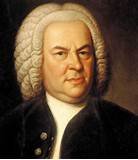What is a fugue anyway?
 If you've been around music or musicians for a while, you may have heard the word "fugue" (pronounced feeyoug, all one syllable). While it's a form of music composers have been fascinated with for centuries, you might not know what it is.
If you've been around music or musicians for a while, you may have heard the word "fugue" (pronounced feeyoug, all one syllable). While it's a form of music composers have been fascinated with for centuries, you might not know what it is.
To oversimplify, it's kind of like a highly-stylized round or a canon. In the round "Row, Row, Row Your Boat," one group of singers starts singing the tune, and then a little later, another group starts singing the same tune, and then later another group starts. Meanwhile, the first group continues singing the next part of the song, and then the next. The sounds from all of the groups blend together to make a pleasing harmony.
"Row Your Boat" is exceedingly simple by comparison with some of the amazing, well-crafted fugues from the past several centuries. From the listener's viewpoint, the challenge and joy in hearing a fugue is to listen to what all of the different groups are doing at once.
The different parts that are sung or played in a fugue are called "voices." So we can talk about 3-voice fugues, 4-voice fugues, and 5-voice fugues. A famous 4-voice fugue is Bach's "Little" Fugue in G Minor. It's worth hearing several times:
Bach was the master of the fugue. Here, for example is one he wrote for his collection of the Well-Tempered Klavier, this one in D Minor. It is introduced by a Prelude.
While the majority of the fugues with which I am familiar are written for solo performance, some beautiful orchestral fugues dot the repertoire.
Here's a more technical and detailed description of the fugue:
https://www.youtube.com/watch?v=vAFETgpt9PA&t=4s
Next post: Types of Scales